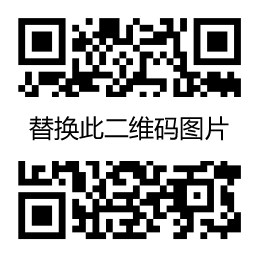教学目标
本单元对话课复习了有关问路及应答用语,要求学生用所学语言自编对话描述所在学校、区域或城市;
本单元介绍了美国的迪斯尼乐园及其创始人Walt Disney艰苦创业的生活经历。通过本单元教学,要求学生掌握迪斯尼乐园的概况,并可根据提示复述沃尔特?迪斯尼奋斗的生活简历。引导学生意识到只有通过自身的努力,艰苦奋斗,才能收获成功的道理。同时,设计问答练习,提高学生阅读能力。
作为高二的起始单元,此处复习了宾语从句的用法,通过课文阅读,完成练习册后练习,学生需熟练掌握此语言项目,并准确运用到口头及书面表达中。
对话教学建议
Step 1听录音
教师放对话录音,放完两遍之后,教师根据对话内容提出一些问题。
1.What were they talking about ?
2.How to answer the first /second/third/forth/fifth visitor question?
Step 2 练习
组织学生五个人一组,练习对话三至五分钟。教师请几组同学到前面表演。
Step 3改写
将对话内容改写为一篇短文,要求学生用本课的地点名称如:
Sleeping Beauty Castle , Bear Country, Horse-drawn streetcars, the Tomorrow Land Building
比如:Carl is answering visitors’ questions. The first visitor asks Carl the way to the Sleeping Beauty Castle….
Step 4 讨论
If you are visitor, How to ask the way to the stranger at first?
Step 5总结
教师提问学生们,归纳和总结对话用语。
Asking:
Where is …...
How can I get to…
Which is the way to…
Could you tell me if…
Could you tell me the way to…
Answering:
Go straight ahead…
It’s behind …/in frond of/
Go down this street…
教材分析
本课的日常用语用语是有关对话asking the way and responses,这样的问路用语在初中都以学过,所以对话不在是个难点。本课的两篇阅读文章是有关人物,沃尔特・迪斯尼。难点在于第一篇是了解他的生活经历和艰苦创业。第二篇是我们众所周知的Disneyland,两篇文章结合着学过的语法知识宾语从句在里面,这也不是学生们所要了解的重点。
词语讲解
1.bring on 引起;使...前进;把...端上来(如饭菜等)
1) I'll bring on the beef in a minute.我一会就端上来牛排。
2) The fine weather is bringing the crops on nicely. 好天气使农作物长得很好。(使发展或进步 )
3) He was caught in the rain and this brought on a bad cold.(引起;导致)他被雨淋了,导致了一场重感冒。
bring on 使发生;
bring in 引来;引进;吸收
bring out 取出;说出;阐明;出版
1) The first dish that was brought on was bean-soup.
2) The sudden cold weather brought on his cold again.
3) His new business brings in 1,000 dollars a month.
4) We also brought in some words from English, such as tank and so on.
5) Bring out the meaning more clearly.
6) They have brought out a set of children's books.
2.You can see as far as the coast.
as far as 远到;到...为止;常用来在句中加重语气
Every day, the old man walks as far as the Summer Palace. 他一直走到颐和园 as/so far as (连词) 就...而言
As far as I know, what you said can't possibly happen.就我所知你所说的事情是不可能发生的。
so far 到目前为止,常用在完成时态中
I haven't got the invitation so far.到目前为止,我还没有得到邀请。
3.One day he remembered the mouse that used to come out in his father's
garage
used to do sth.
ju:st
1) My friend used to write to me, but now she prefers sending e-mails.
be used to do sth. 被用来做
ju:zd
1)The house was used to keep books two years ago.
2)Elephants are used to carry things.
be/get used to doing/sth.
ju:st
1) I have been used to living in this area.
I have got used to living in this area.
2) I came to Beijing 10 years ago, and I've got used to the weather here.
4.Go through the gate and you'll find the entrance. = If you go through the gate, you'll find the entrance. / Go through the gate, or you won't find the entrance.
注意连词的位置,而且每个复合句中只能有一个连词,不要在一个句子中重复连词。
1) Use your brain and you'll find a way.
2) If you study hard, you'll surely make progress.
3) Hurry up! Or we'll miss the last train.
语法讲解
宾语从句
I. 宾语从句 即在复合句中作主句的(及物动词或介词)宾语。宾语从句通常由连接代词或副词引导;可分为四类:
1.由 that引导的宾语从句(that没有任何意义,在从句中不充当任何成分,在口语和非正式文体中常可以省略):
I thought (that)the food was rather expensive.
Mother knows (that) Jim will work hard.
2. 由 if /whether“是否” 引导的宾语从句:
I wonder if/whether it was Disney who made the first cartoons.
Could you tell me if/whether Mr. Black lives here?
3. 由 what, why, when, where, who, which, whose, whom, how 等 wh- 类连接代词或副词引导的宾语从句:
Can anyone fail to see what kind of show they are putting on?
Please tell me which class you are in?
He asked me whom I was waiting for.
The stranger doesn’t know when the ship arrives.
I didn’t understand why the boy had so many questions.
Please ask the teacher how we get to the place.
4.由关系代词型what 等代词引导的宾语从句:
We always mean what we say.
I will try to make up what I have missed.
I’ll give you whatever help you need.
I’ll read whichever book you recommend
II.使用宾语从句应注意的几个问题
1.连接代词或副词的使用。连接代词或副词的使用是由句子的意义决定的(这是高考的重点)。
A computer can only do what you have instructed it to do.
--“Doesn’t Helen live on this street?”
--“No. This is where Leon lives.”
2. 宾语从句的语序。无论是连接代词还是连接副词引导的宾语从句的 语序都应是陈述句的语序。
She asked the boys if they had white hats.
I don’t remember when we arrived.
Do you know which class he is in?
3. 时态的呼应。分以下三种情况考虑:
1) 主句的谓语动词是过去时态时,从句的时态也应是过去的某种时态。
He answered (that) he was listening to me.
Lily told us (that) she was born in May, 1980.
2) 主句的谓语动词是过去时态时,从句所叙述的是客观真理、格言时,从句时态无需改变,仍用一般现在时。
The teacher said that (that) the earth goes around the sun.
Father told me that practice makes perfect.
2)主句的谓语动词是现在时或将来时,从句的时态不受限制。根据实情,可使用任何所需时态。
He says he will be back in an hour.
They know Jim is working hard.
4.形容词后的宾语从句。
常可跟宾语从句的形容词有:afraid, glad, sure, happy, pleased, surprised, sorry 等等。
She is afraid that Jim will forget his Chinese.
I’m sure that he will succeed.
5.介词后的宾语从句。
介词后所接从句为宾语从句,whether ,if 不能引导宾语从句。
I am interested in how we use computers.
This depends on whether we have enough people.
6.如果宾语从句后边还有宾语补足语,则需用it 作形式宾语,而将宾语从句后置。
You may think it strange that he would live there.
7.否定的转移。在think, believe, suppose 等动词引导的宾语从句中, 谓语尽管是否定意义,却不用否定形式,而将think等动词变为否定形式。
I don’t think what you have said is right.
I don’t believe they’ve finished their homework yet.
8.在hope, believe, guess, think, expect, say以及be afraid等词语后,可用“so”代替一个宾语从句(指上文提及之事)。
声明:有的资源均来自网络转载,版权归原作者所有,如有侵犯到您的权益 请联系邮箱:yuname@163.com 我们将配合处理!
原文地址:Disneyland发布于2021-10-22

